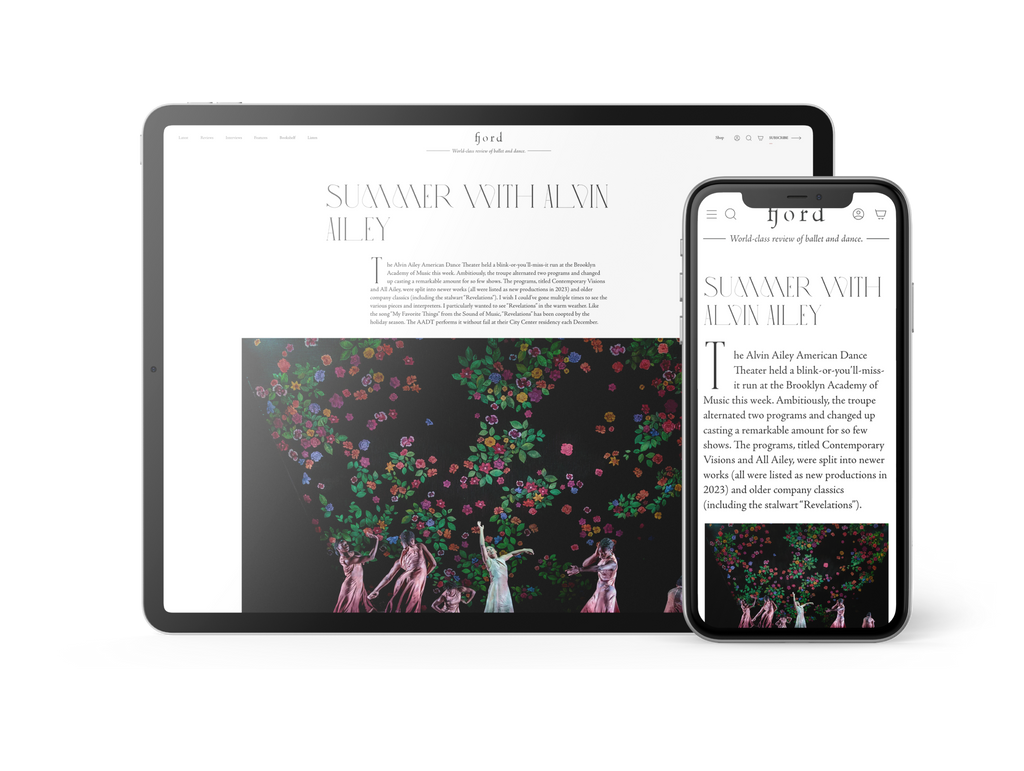Spellbound
Two performers crawl in on hands and knees wearing neon green, hooded coveralls—the lightweight papery kind made for working in a sterile environment—and clusters of balloons pinned to their backs.
Continue Reading
World-class review of ballet and dance.
“Dance is a fragile thing—it only exists in the moment you do it, and then it’s gone.” So Robert Cohan reminded us when he took to the stage at the end of this gala, organised to celebrate his 90th birthday and honour his many achievements on stage and in the studio. The American choreographer—who trained with Martha Graham and famously went on to partner her in some of her biggest works—has a devoted following the world over, but he’s especially beloved in the UK, where the dance scene would look distinctly different had he not teamed up with Robin Howard five decades ago to, in his words, “bring an injection of American contemporary dance to Britain.” The pair launched London Contemporary Dance Theatre in 1967, which nurtured the UK’s first generation of modern dancers, churning out some of the country’s top talent (including Siobhan Davies) during its 25-year run and laying the groundwork for another seminal contemporary troupe: Richard Alston Dance Company. The site of all this creativity? The Place, where an enthusiastic audience greeted Cohan last week, eager to witness this mini-retrospective on his artistic legacy.
Performance
Place
Words

Tony Adigun's “Wilderness.” Photograph by Camilla Greenwell


“Uncommonly intelligent, substantial coverage.”
Your weekly source for world-class dance reviews, interviews, articles, and more.
Already a paid subscriber? Login
Two performers crawl in on hands and knees wearing neon green, hooded coveralls—the lightweight papery kind made for working in a sterile environment—and clusters of balloons pinned to their backs.
Continue ReadingWill Rawls makes boundaries visible by defying them. Known for the disciplinary and topical range of his projects, the choreographer, director, and performer approaches issues of representation in “[siccer],” a multi-part, multi-site work co-presented by L’Alliance New York’s Crossing the Line Festival. A live performance at Performance Space New York accompanies a multimedia installation at the Kitchen, a book published by Wendy’s Subway, and an album published by the artist. With a creative process reaching back to 2018, the work delves explicitly into pandemic-era energies and inertias with focused intimacy and a pervasive sense of instability.
Continue ReadingIt is always interesting when multiple theme steps emerge over the course of a mixed repertory evening, but it is uncanny on one featuring five different ballets, each with a different choreographer and composer, covering a twenty-year span (2005-2025).
Continue ReadingZvidance premiered its new work “Dandelion” mid-November at New York Live Arts. Founded by Zvi Gotheiner in 1989, Zvidance has been a steady presence in the New York contemporary dance scene, a reliable source of compositional integrity, and a magnet for wonderful dancers.
Continue Reading
comments